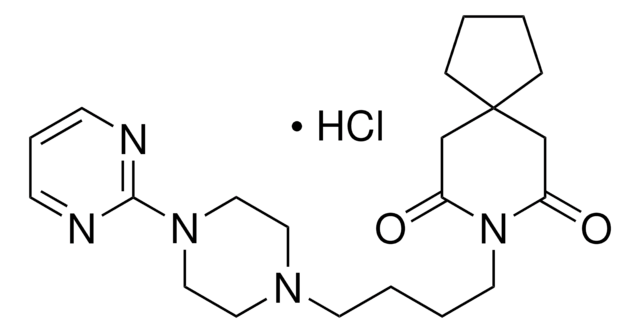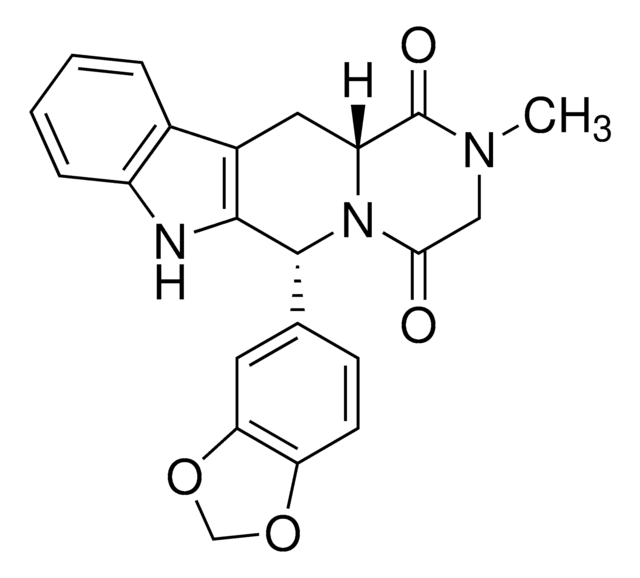All Photos(1)
About This Item
Empirical Formula (Hill Notation):
C53H69N7O10
Molecular Weight:
964.16
UNSPSC Code:
12352200
NACRES:
NA.32
Recommended Products
Assay
≥95% (HPLC)
form
lyophilized
composition
Peptide Content, ≥85%
storage condition
protect from light
storage temp.
−20°C
Amino Acid Sequence
Ac-Bhg-Leu-Asp-Ile-NMeIle-Trp
Application
PD-156252 is used as an endothelin-A/endothelin-B (ETA/ETB) receptor antagonist.
Storage Class Code
11 - Combustible Solids
WGK
WGK 3
Flash Point(F)
Not applicable
Flash Point(C)
Not applicable
Choose from one of the most recent versions:
Certificates of Analysis (COA)
Lot/Batch Number
Don't see the Right Version?
If you require a particular version, you can look up a specific certificate by the Lot or Batch number.
Already Own This Product?
Find documentation for the products that you have recently purchased in the Document Library.
W L Cody et al.
Journal of medicinal chemistry, 40(14), 2228-2240 (1997-07-04)
The endothelins (ETs) are a family of bicyclic 21-amino acid peptides that are potent and prolonged vasoconstrictors. It has been shown that highly potent combined ETA/ETB receptor antagonists can be developed from the C-terminal hexapeptide of ET (His16-Leu17-Asp18-Ile19-Ile20-Trp21), such as
Endothelin receptor antagonists: an overview of their synthesis and structure-activity relationship.
Javed Iqbal et al.
Mini reviews in medicinal chemistry, 5(4), 381-408 (2005-04-28)
Endothelins (ETs) are potent vasoconstrictor peptides and are associated with several disease states like pulmonary hypertension, systemic hypertension and heart failure. Endothelin-1 (ET-1) is the first member of the family and it has the receptor subtypes known as ETA and
Pierre Shephard et al.
Thrombosis and haemostasis, 92(2), 262-274 (2004-07-23)
Myofibroblasts are specialized fibroblasts that contribute to wound healing by producing extracellular matrix and by contracting the granulation tissue. They appear in a phase of wound healing when the dermis strongly interacts with activated epidermal keratinocytes. Direct co-culture with keratinocytes
Our team of scientists has experience in all areas of research including Life Science, Material Science, Chemical Synthesis, Chromatography, Analytical and many others.
Contact Technical Service







